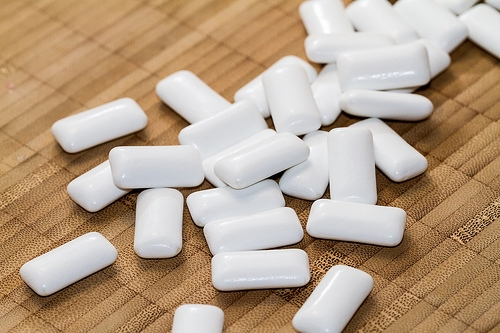Xylitol: A significant factor for improving your oral health
February 22nd, 2023

Xylitol is a naturally occurring sweetener found in tree bark, plants, fruits, and vegetables. The human body also produces it in small amounts. It looks and tastes like sugar, so as part of a health regimen, most people require no willpower to use it.
Xylitol is safe (approved by the World Health Organization) because only a small amount is needed for health benefits. With a glycemic index of seven, it is safe for diabetics. It has less than three calories per gram and 40% fewer calories than other carbohydrates. If eaten in extremely large amounts too quickly, it has a laxative effect in humans.
Tooth decay happens when bacteria in your mouth consume the sugars you eat. When you eat food that contains ordinary sugar, it gives energy to the bacteria on your teeth, allowing them to multiply and start making acids that destroy the enamel on the teeth.
Since xylitol is a natural sweetener derived from the fibrous parts of plants, it does not break down like sugar, so it helps maintain a neutral pH level in the mouth. Xylitol also prevents bacteria from sticking to the teeth because they are unable to digest it. That is how it protects the teeth from cavities.
With xylitol, the acid attack is diminished. With less bacteria and acid, your teeth stay healthier. The frequency of xylitol ingestion is important: aim for five grams a day, or one gram every three hours.
Studies of xylitol use as either a sugar substitute or a small dietary addition have demonstrated a dramatic reduction in new cavities. It has also stopped and even reversed some existing cavities. This effect is long lasting and possibly permanent. Low cavity rates persist even years after the trials have been completed.
Xylitol needs to be one of the first ingredients in a product to be effective. It is convenient and easy to use. You can find it in health food stores and specialty grocery stores. Xylitol can be delivered to your teeth in chewing gum, tablets, or even candy and mints.
It also comes in toothpaste, mouth rinse, baby oral wipes, gel and pacifiers, nasal wash, dry mouth spray, a granulated form for cooking, granulated packets to add to drinks, and commercially prepared foods. It can replace sugar on a one-to-one ratio.
Sweet rewards in xylitol are good for the body and the teeth! If you have specific questions please feel free to contact Ray Orthodontics. We look forward to seeing you soon!
Positioned for Success
February 15th, 2023

As you near the end of your orthodontic treatment, you’re probably already imagining the day when your brackets and wires finally come off. Or the moment you’ve finished with your last set of aligners. That day might come just a bit sooner if Dr. David Ray and our team recommend a positioner.
While not as well-known as other orthodontic treatments, a positioner is an appliance that can shorten your time in traditional braces and aligners by weeks or even months. Curious? Read on!
- What Exactly Is a Positioner?
A positioner resembles a clear mouthguard. Its arched shape is designed to fit snugly over your teeth. It’s sometimes called a finishing appliance, because it’s designed to make those last small adjustments to your alignment and bite. If you’re a good candidate for a positioner, it can replace your braces or aligners for your last several weeks or months of treatment.
- How Are Positioners Made?
This appliance is custom fabricated to fit your very specific orthodontic needs. Commonly, a mold is made of your teeth. A model of your teeth is made from this mold. Precision instruments are used to move the model teeth into your ideal alignment.
Once this model of your future finished smile is complete, it is used to create the positioner. When the thermoplastic material is molded to the model, it creates an appliance with an indentation for each individual tooth in its desired final location.
Available in a variety of materials, a positioner is most often designed as a clear single piece, covering both your upper and lower teeth. This makes sure that your teeth are not only aligned properly, but that your upper and lower teeth are working together for a healthy bite. Openings in the positioner provide airways which allow you to breathe easily.
- How Do Positioners Work?
Because your teeth haven’t settled firmly into place yet (this will happen as you wear your retainer), they’re still able to move. That’s why your positioner is shaped to fit your teeth in their future ideal placement, not where they are at present.
Positioners require your active participation. Your teeth move to the ideal spots molded into the positioner through “exercise”—biting down on your appliance for 15-20 seconds before relaxing your bite, usually every 10-15 minutes during your daily wear. The gentle force provided by your jaw muscles helps guide your teeth into position more quickly. Dr. David Ray will give you instructions on just how to—and how often to—do these exercises.
- How Long Are They Worn?
Positioners are commonly worn at least four hours a day to start with and all night long, or Dr. David Ray might recommend 24 hour a day wear for the first week. As you progress, you’ll wear them for shorter periods during the day, gradually tapering off until your treatment is complete.
Depending on the amount of correction that’s still needed, positioner use ranges from several weeks to several months. One thing that will ensure that your time in a positioner is as short as it can be is your willingness to follow our instructions. The speed and effectiveness of your final tooth movements is largely up to you!
- Caring for a Positioner
Gentle treatment is best. Clean your positioner before and after wearing it using a toothbrush and mild toothpaste. Never boil it or expose it to heat. We will give you instructions for how to clean it more thoroughly, if needed.
Like retainers, clear aligners, and mouthguards, a positioner needs to be protected when it’s not in your mouth. Your positioner will come with a case, so be sure to use it!
Positioners aren’t recommended for every orthodontic patient. But if you feel this might be an option worth pursuing, talk to us when you visit our Westerville, OH office. A positioner could be an effective, time-saving step on your path to a lifetime of healthy smiles.
How do I know if I have dry mouth?
February 8th, 2023

Dry mouth, also medically known as xerostomia, is the condition of not having enough saliva, or spit, to keep your mouth wet. There are many ways to keep dry mouth at bay, including:
- Brushing your teeth after every meal with a fluoride toothpaste
- Flossing every day after a meal
- Avoiding tobacco, as well as drinks containing alcohol or caffeine
- Avoiding dry foods, as well as foods containing high salt, acid, spice, or sugar levels
- Drinking water frequently or sucking on ice chips
- Using a humidifier at night
Please call our convenient Westerville, OH dental office to learn more about dry mouth, or ask us during your next visit!
Be Prepared!
February 1st, 2023

When you’re busy at school or work, when you’re on vacation, when you’re on the road to adventure—preparation helps everything go smoothly. Especially when the unexpected happens! So, how can you be prepared for any orthodontic and dental situations which might arise? By creating these useful—and portable—travel kits.
Everyday Basics Kit
Dentists recommend brushing twice a day and flossing at least once each day for clean and healthy teeth. But after a long day at school or work with no time to head home before your date, or a garlic-heavy lunch in the cafeteria, or a dash from the classroom to after-school activities, you might feel like there’s no time like the present to give your smile a bit of a boost.
Be prepared with a small travel bag filled with these easy-to-carry basics to get you through your busy day with clean teeth, fresh breath, and a confident smile:
- Toothbrush and case—and do make sure your case is ventilated so your brush can air dry. Bacteria love a closed, damp environment!
- Toothpaste
- Mini-bottle of mouthwash
- Small mirror—to check for any lunch leftovers
- Dental floss—to remove any lunch leftovers. Use braces-friendly dental floss if you have traditional braces.
- Dental Wax—to cover any uncomfortable wires or brackets
- Interproximal brushes—to remove food particles from around your braces and between your teeth
- Extra rubber bands
- Aligner/Retainer case—keep your aligner or retainer safe and clean while you’re eating
Flight Gear
Getting set to travel by air again after this long lay-over? Your basic kit will do the job with just a few minor additions and alterations.
- A travel version of your manual or electric toothbrush and travel case
- Plug adapter or voltage converter as needed for your electric brush if you’re visiting another country
- Quart size, resealable plastic bag to hold your carry-on supplies. Toothpaste and mouthwash are included in the list of items which need to fit carry-on guidelines.
- Travel-size toothpaste—3.4 oz (100 ml) or smaller tube size. (And an almost-empty regular size tube doesn’t count!)
- Travel-size mouthwash—also in a 3.4 oz (100 ml) or smaller container
- Our Westerville, OH office’s phone number. In case of emergency, Dr. David Ray can give you advice on how to handle any problem which might arise when you’re far from home.
Looking for Adventure?
If you’re camping in the forest, leaving for the lake, going for a road trip, or heading out on any travel adventure, you’ll be bringing the dental care basics, of course. We’d also like to recommend some items to take along in the event of a dental emergency while you’re away from home:
- Dental mirror
- Cotton rolls
- Over-the-counter pain relief—including a tube of oral pain relief gel
- Ice pack
- Dental wax—this handy item not only protects against sharp wires, it can cover the sharp edges of a broken bracket
- Temporary fillings—to protect your sensitive tooth if a filling or crown is lost
- Tooth preservation kit—to protect a dislodged tooth in case it can be reimplanted. (This means seeing a dentist very quickly, usually within 30 minutes of the accident.)
And, if you’ll be mountain biking, water skiing, or enjoying any activity where there’s potential for impact, don’t forget to pack your mouthguard!
Preparation is key to eliminating a lot of stress in our daily lives, and who couldn’t use a bit of stress-relief these days? Make room in your bag, locker, desk, luggage, or backpack for some portable, lightweight dental necessities. Be prepared to share your confident, healthy smile no matter what life has in store!






